Is Betelgeuse About To Explode?
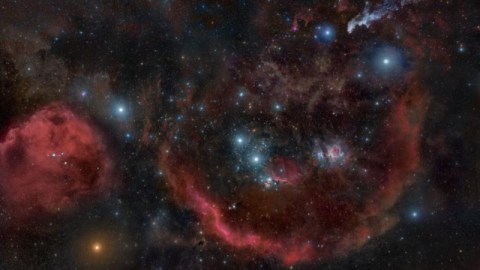
It’s a supergiant star in the final stage of its life, and it just dimmed by an enormous amount. What’s going on?
When you take a look at the stars in the night sky, they generally appear the same regardless of time. Only a small number of stars ever appear to change on human timescales, as most stars burn through their fuel very stably, with almost no variation in their continuous brightness. The few stars that do appear to change are either intrinsically variable, members of multi-star systems, or go through an enormous evolutionary change.
When very massive stars get close to the end of their lives, they start varying by tremendous amounts, and do so with significant irregularity. At a critical moment, most of these stars will run out of the nuclear fuel holding up their cores against collapse, and the resulting implosion leads to a runaway cataclysm: a core-collapse supernova. Could Betelgeuse, whose variability intensified in a novel way over the last few days, be about to explode? Here’s what astronomers know so far.

The last time our species witnessed a supernova from within our own galaxy with the naked human eye, the year was 1604. A new point of light in the sky suddenly appeared, brightened, and briefly outshone every single star before slowly fading away. This wasn’t the first such event, as prior supernovae had illuminated Earth’s skies like this in 1572, 1054, and 1006, among others.
But all of those supernovae occurred from stars that were thousands of light-years away, with Kepler’s 1604 explosion being traced back to a stellar remnant located some 20,000 light-years across the Milky Way. Of all the stars we see in the night sky, one bright member stands out as the most fascinating possibility as our galaxy’s next supernova: Betelgeuse, one of our sky’s 10 brightest stars, located a mere 640 light-years away.
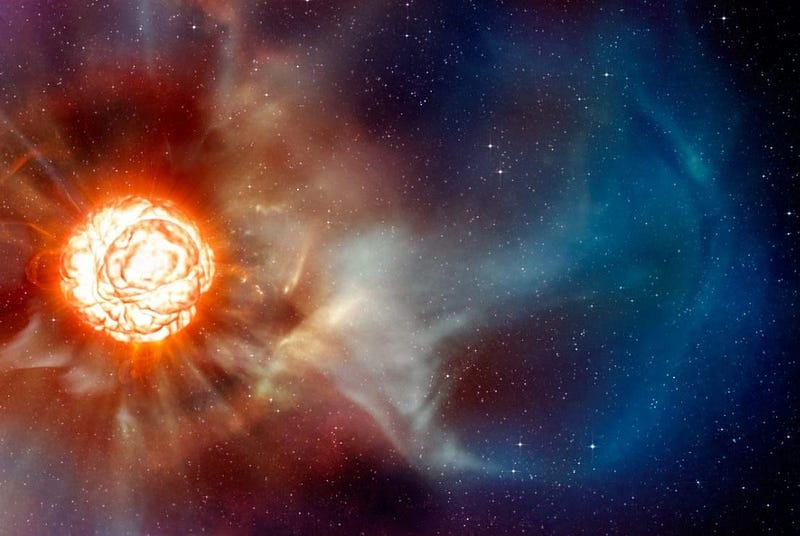
Betelgeuse, best known as the bright red “shoulder” star in the constellation of Orion, is one of the most remarkable objects in all of astronomy. It is a red supergiant star: red because of its low surface temperatures, supergiant because its radius is so enormous that — if it were to replace the Sun in our Solar System — it would engulf the orbits of Mercury, Venus, Earth, Mars, the asteroid belt, and possibly even Jupiter! In terms of physical size, it’s approximately 900 times the radius, and 700 million times the volume, of our Sun.
Betelgeuse is so large and so close that it was the first star beyond our Sun to ever be resolved as more than a point source. But perhaps its most fascinating property is that Betelgeuse is a pulsating, variable star, meaning that its diameter and brightness both change with time.
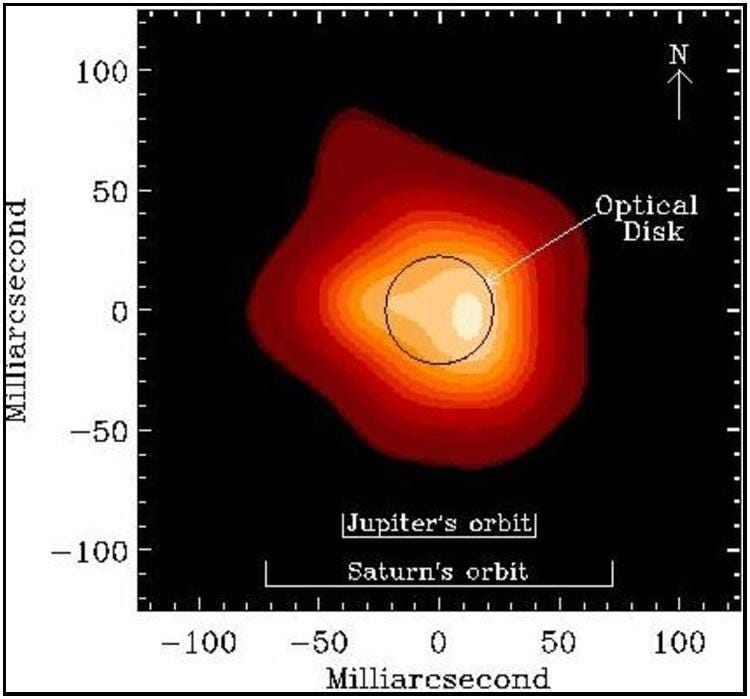
At approximately 20 times the mass of our Sun, there’s little doubt that Betelgeuse is headed on it was to becoming a supernova. Betelgeuse was likely formed in the great Orion molecular cloud complex very recently on cosmic scales: within the last 10 million years. It has already finished burning through all the hydrogen fuel in its core, and has gone onto the next element, helium, which it fuses into carbon.
Perhaps ironically, the core of Betelgeuse is now much smaller than when it was fusing hydrogen, as it contracted and heated up tremendously in order to begin fusing helium. The outer layers, with this increased radiation pressure, expanded and cooled tremendously. At a surface temperature of only 3500 K, barely half the temperature of our Sun’s photosphere, only 13% of Betelgeuse’s energy output is detectable to human eyes. If we could see the entire electromagnetic spectrum from our perspective, Betelgeuse would outshine every star in the Universe except our Sun.
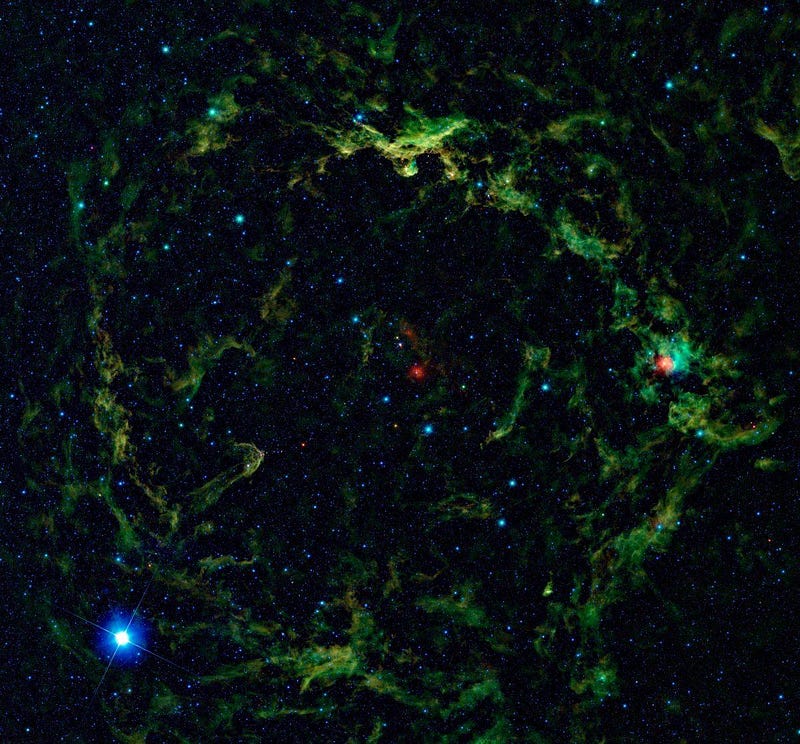
We aren’t sure whether Betelgeuse is exclusively fusing helium in its core, or whether the interior has contracted even further and is now fusing carbon. While the helium fusion phase lasts for timescales of ~100,000 years, carbon fusion lasts for merely hundreds. Unfortunately, the only signature that would give us a surefire view of what processes are occurring in the core — neutrino emissions — are too faint to be seen from 640 light-years away.
All we can observe, when it comes to Betelgeuse at the present, is what’s occurring in its outermost layers. When we look there, what we see is remarkable: it’s constantly losing mass, pulsing, having its outermost layers expelled, and changing over time in both its apparent brightness and redness.

Recently, in just the past few weeks, its brightness has dropped tremendously, knocking it out of the top 10 brightest stars for the first time in many years. This dimming has led many to suspect that a supernova may be imminent, but this is extremely unlikely. The story is simple, straightforward, but not known by most people, with the exception of professional astronomers.
The key takeaway is this: what’s occurring in the outer layers of a supergiant star is largely unrelated to what processes are occurring in the inner core of a supergiant star. When you examine variable stars in general, you might think that the pulsing/variability that you see is because some process that’s changing in the core is propagating to the surface, but that’s not usually the case. Instead, there are huge convective cells in the outer layers of the star, and changes there are more than capable of causing this dimming.
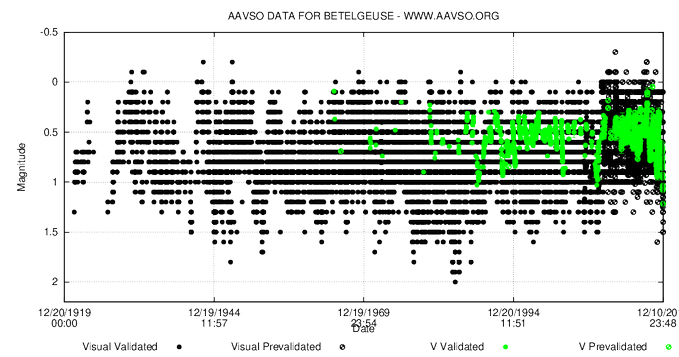
In fact, if you look beyond the previous decade and instead go back to the past century, you’ll find that Betelgeuse has been this dim many, many times in the past. If you look beyond the photosphere of the star itself, you’ll find that there are enormous radio emissions that reveal the presence of expelled gas out beyond where the orbit of Neptune is around the Sun.
Similar dimming events have occurred before, reducing the brightness of Betelgeuse below even what it currently is at. But to see a dimming event occur this rapidly and this severely really hasn’t been seen before over the past century at all. It’s unlikely to be a signature of an imminent supernova, but we have to remember that since the advent of modern astronomy, we’ve never seen a star up close in the lead-up to a supernova. Whether there’s a detonation about to happen or not, something fascinating is truly occurring.
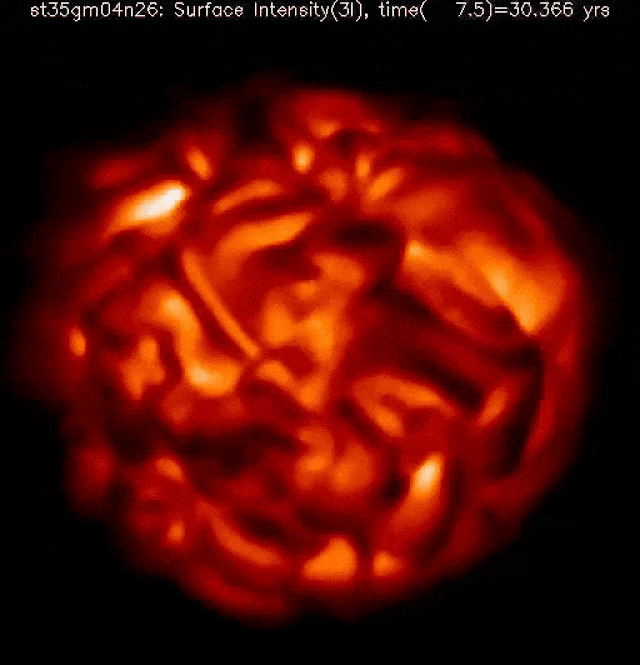
What’s not up for debate is how truly remarkable the processes at play are here. On our Sun alone, the sized of the convective cells that we find are larger than the continent of North America, with sunspots frequently exceeding the size of Earth. On the surface of a red supergiant — thousands of times larger than our Sun — there might only be a handful of convective cells altogether, causing it to look like, according to astronomer Emily Levesque, a “wacky, giant, boiling amoeba-star,” as simulated above.
Our actual astronomical maps of Betelgeuse cannot yet attain that kind of resolution, but can still reveal the following properties of Betelgeuse:
- its irregular shape,
- its uneven, non-uniform temperature,
- localized hot spots,
- and even faint plumes of illuminated ejecta near the photosphere itself.
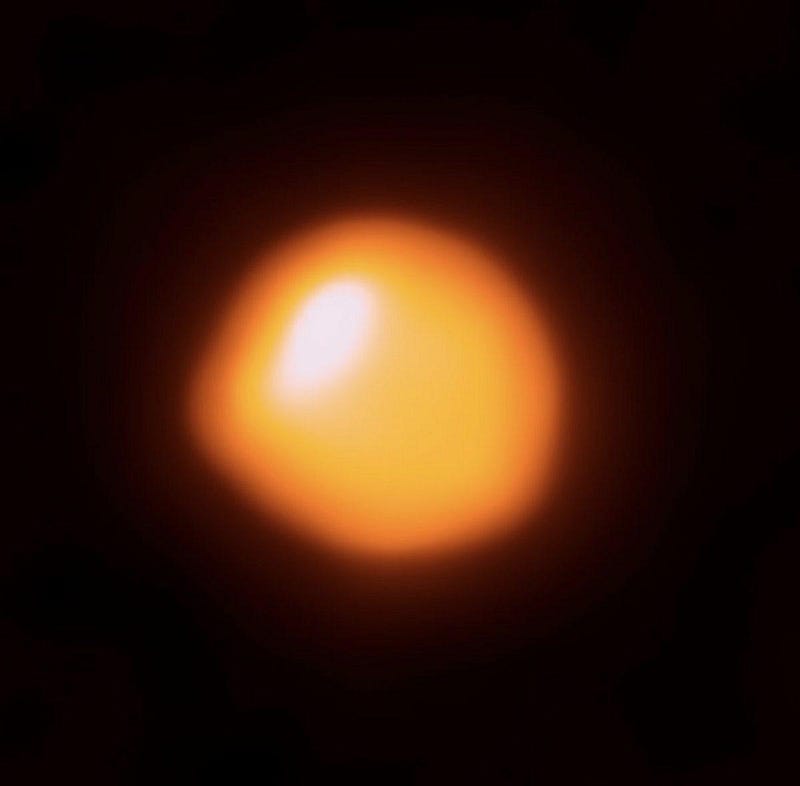
The opportunity to study a red supergiant up close, one that’s about to go supernova relatively soon (at least, on astronomical timescales), has never occurred like this before. At only 640 light-years distant, Betelgeuse could have gone supernova at any time since the 14th century and that signal would not yet have arrived here on Earth.
When that supernova does occur, however, we’re in for a real treat. The runaway fusion reaction that occurs in the final few instants of the star’s life will generate neutrinos that should lead to millions of detectable events here our terrestrial neutrino detectors. The star will brighten to the point where it will rival or possibly even exceed the brightness of the full Moon, casting brilliant shadows at night and being clearly visible during the day for more than a year.
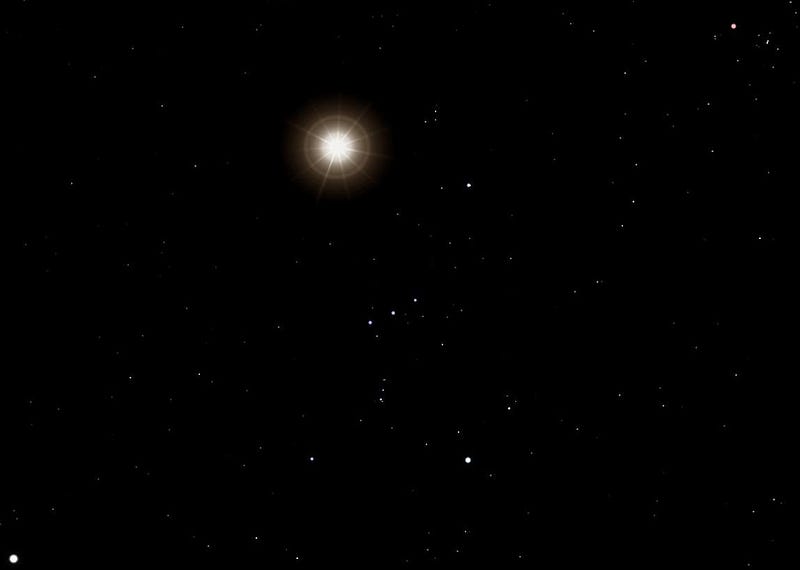
Unfortunately, though, the key question of exactly when Betelgeuse is going to go supernova is one that we’re not any closer to having an answer to. Until we can measure the processes occurring in the star’s core, which would require a neutrino telescope far more powerful than all the neutrino observatories on Earth combined, we cannot know which elements are being fused inside of it.
Right now, our best models are consistent with helium-burning rather than any of the heavier elements, indicating that we have at least hundreds of years — and possibly hundreds of thousands — until the inevitable supernova finally detonates. If you haven’t checked out the constellation of Orion recently, though, take a good look and notice how much dimmer red Betelgeuse is than blue Rigel, a severe departure from its past decade of appearances. A supernova may not be imminent, but is sure is fascinating to watch and hope!
Ethan Siegel is the author of Beyond the Galaxy and Treknology. You can pre-order his third book, currently in development: the Encyclopaedia Cosmologica.





